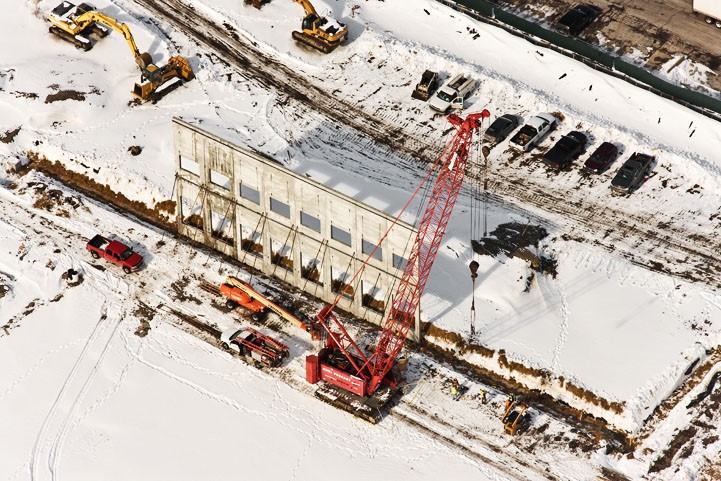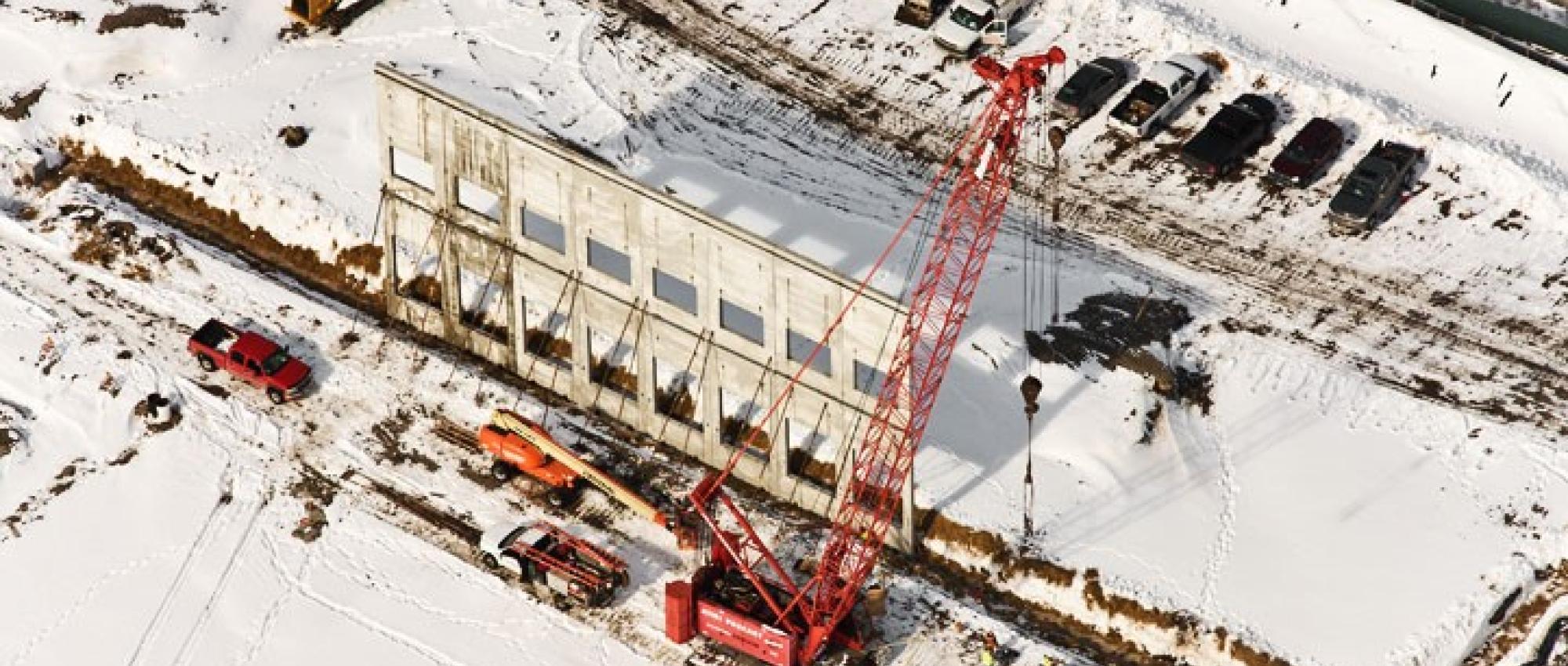Building with Precast Concrete in Bitter Cold
If there’s anything we can rely on in the Midwest, it’s that January and February (and sometimes March and April) will bring snow and extreme cold at times. This is usually a roadblock when it comes to construction – but not when it comes to precast concrete. Being able to build during the winter months is a huge benefit to working with precast concrete. Let’s explore how working with precast concrete can help you stay on time and on budget during the winter season.
The Problem: It’s definitely too cold for cast-in-place (CIP) concrete to set.
We talk about extreme cold as being an issue when it comes to setting concrete onsite. However, when the mercury drops below freezing temperatures, CIP concrete isn’t a viable option. In the Midwest region the temperature can get to below freezing as early as November or December. Of course, those temperatures can always stick around until May – it just depends on the year. That means that the “cold weather” season here can technically last as long as 7 months. The solution is building with precast concrete. Since this material is manufactured off-site, in temperature-controlled manufacturing plants, it’s the key to keeping construction going during this time of year.The Problem: It’s probably too cold for CIP concrete to set.
If you live and work in the Midwest you know that we can wake up with a frost and end up in shorts and t-shirts in the late afternoon. The spring and fall seasons are traditionally unpredictable here, and banking on the accuracy of weather forecasts isn’t what we’d call a guaranteed game plan. If the temperature is hovering around where you need it to be for your concrete products to set, it can be a gamble resulting in inconsistent finishes. But, working with precast concrete products mitigates that risk. Quality control of precast concrete products is ensured by an internal batch plant where the precise aggregate, powder, water and other additives are mixed at a consistent temperature – therefore resulting in a uniform product.
The Problem: It’s too cold to send multiple crews.
When site conditions are tight, it can be downright dangerous to have too many trades onsite during snow and ice events. Minimizing worker exposure to the elements during extreme weather conditions is important to everyone involved – especially contractors. Working with precast concrete eliminates the congestion of having too many workers at the job site, thereby increasing safety.
ATMI Precast has the ability to start the design process and manufacturing prior to beginning on-site activities. Additionally, our year-round unimpeded manufacturing and erection capabilities mean your precast construction will stay on schedule. We offer unmatched economy and speed to complete your project on budget and on time.
Is precast concrete a good fit for your project? Contact us today. We’d love to work with you!

